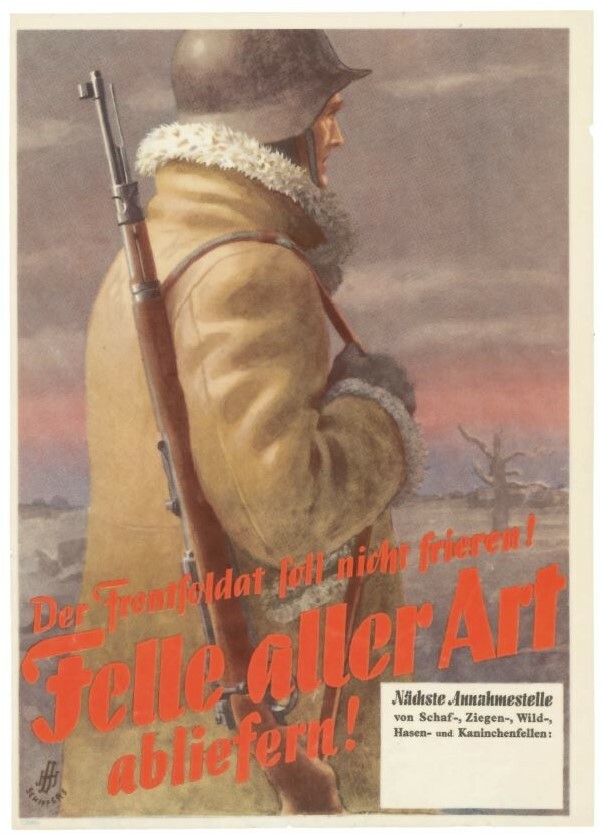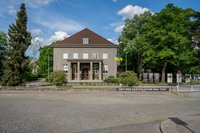Ein Plakat mit dem Text "Der Frontsoldat soll nicht frieren! Felle aller Art abliefern". In Erwartung eines schnellen Sieges hatte die Wehrmachtsführung den größten Teil ihrer Soldaten nicht mit Winterkleidung ausgerüstet. Im Winter 1941/42 wurden deshalb improvisierte Sammelaktionen gestartet. Unten rechts auf den Plakat gibt es ein Feld, wo der Aussteller den nächsten Annahmestelle von Schaf-, Ziegen-, Wild-, Hasen- und Kaninchenfellen eintragen kann.
en









